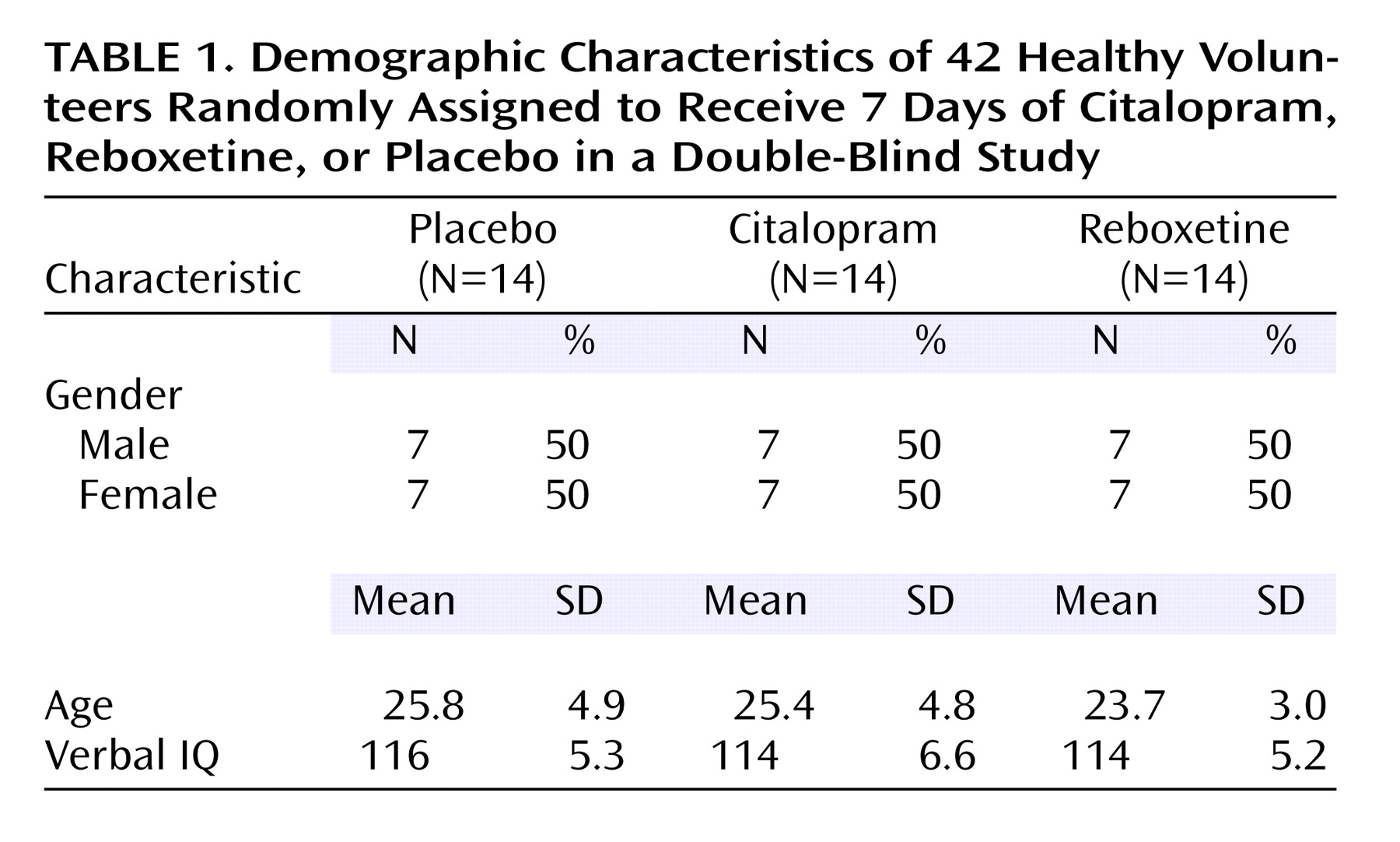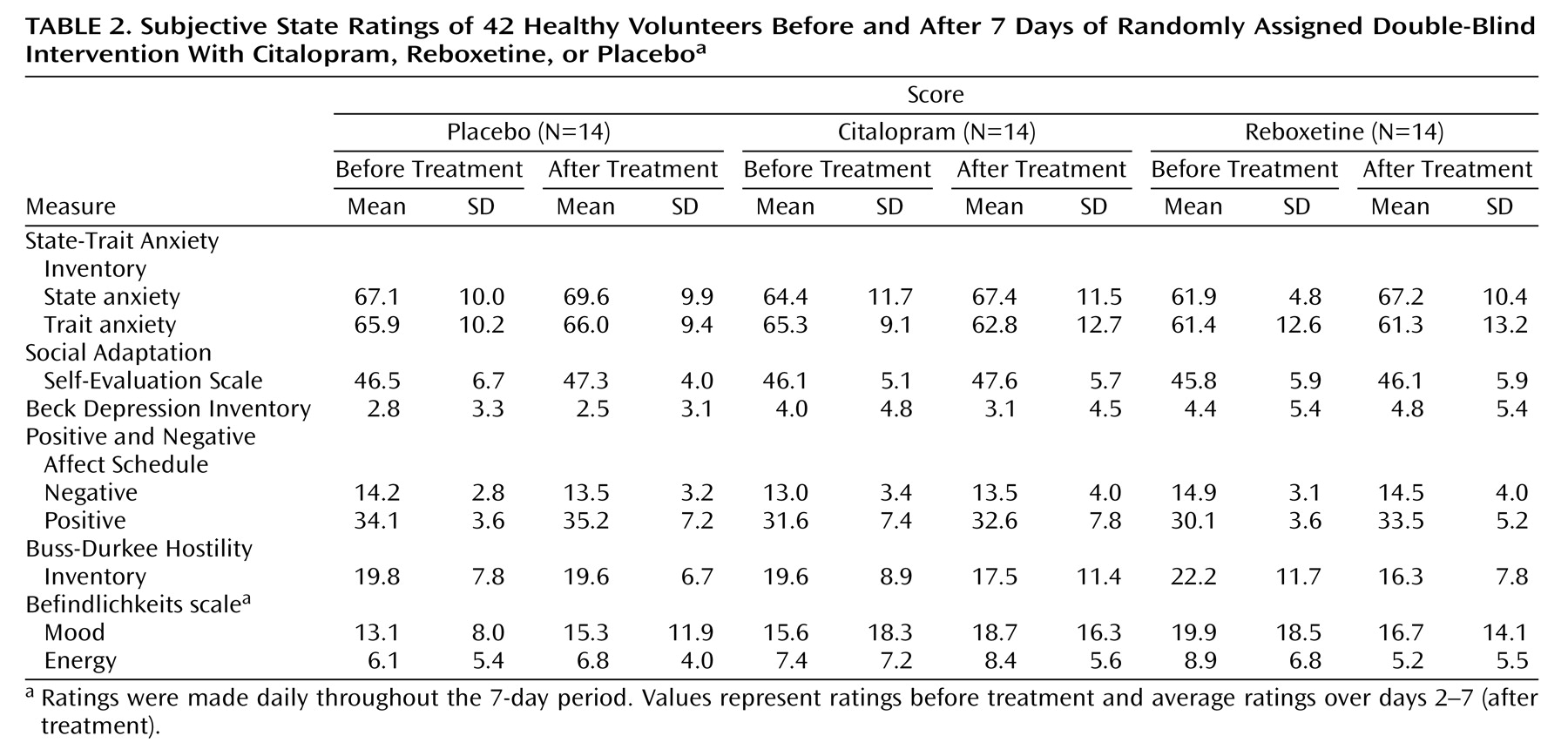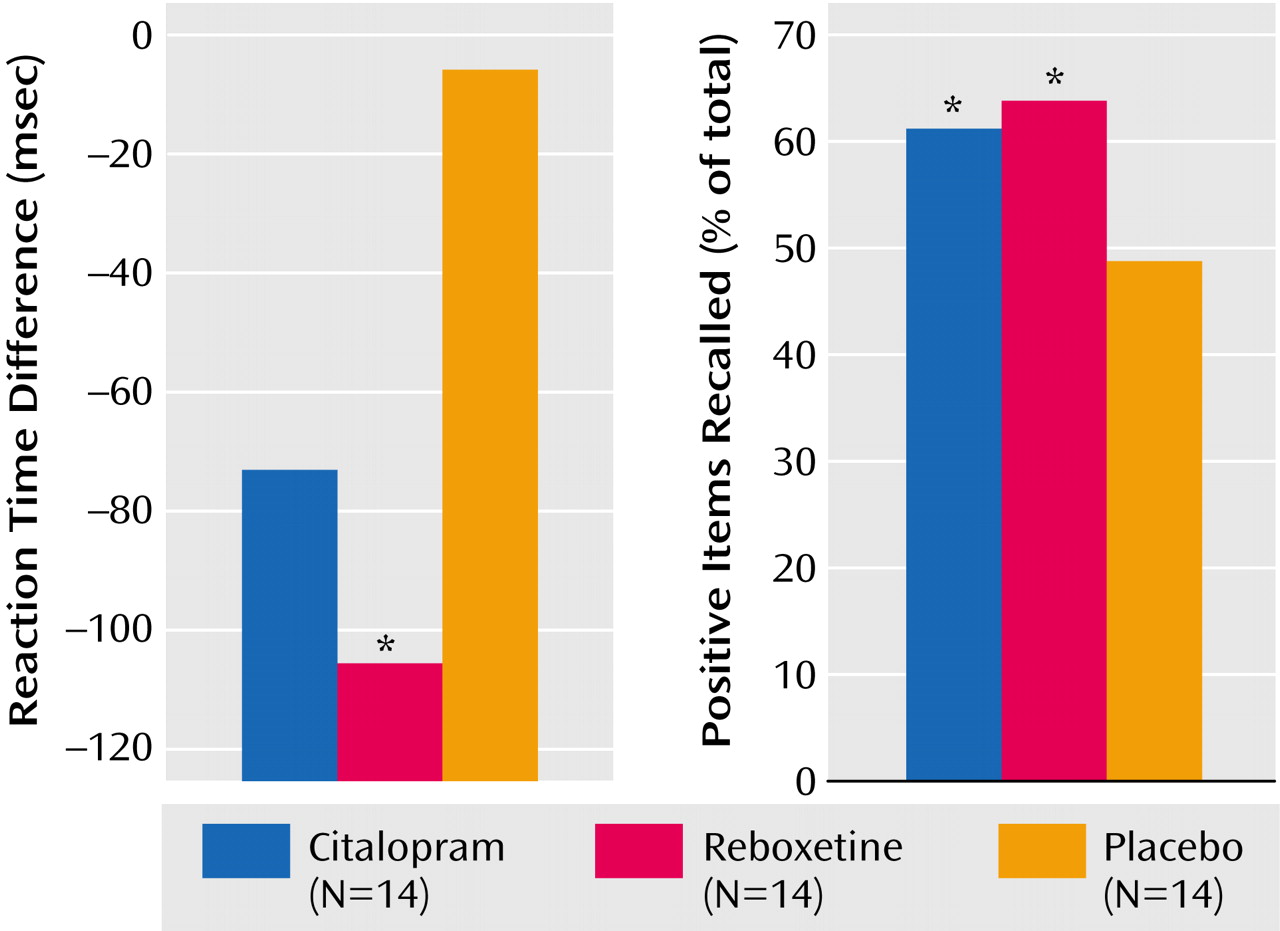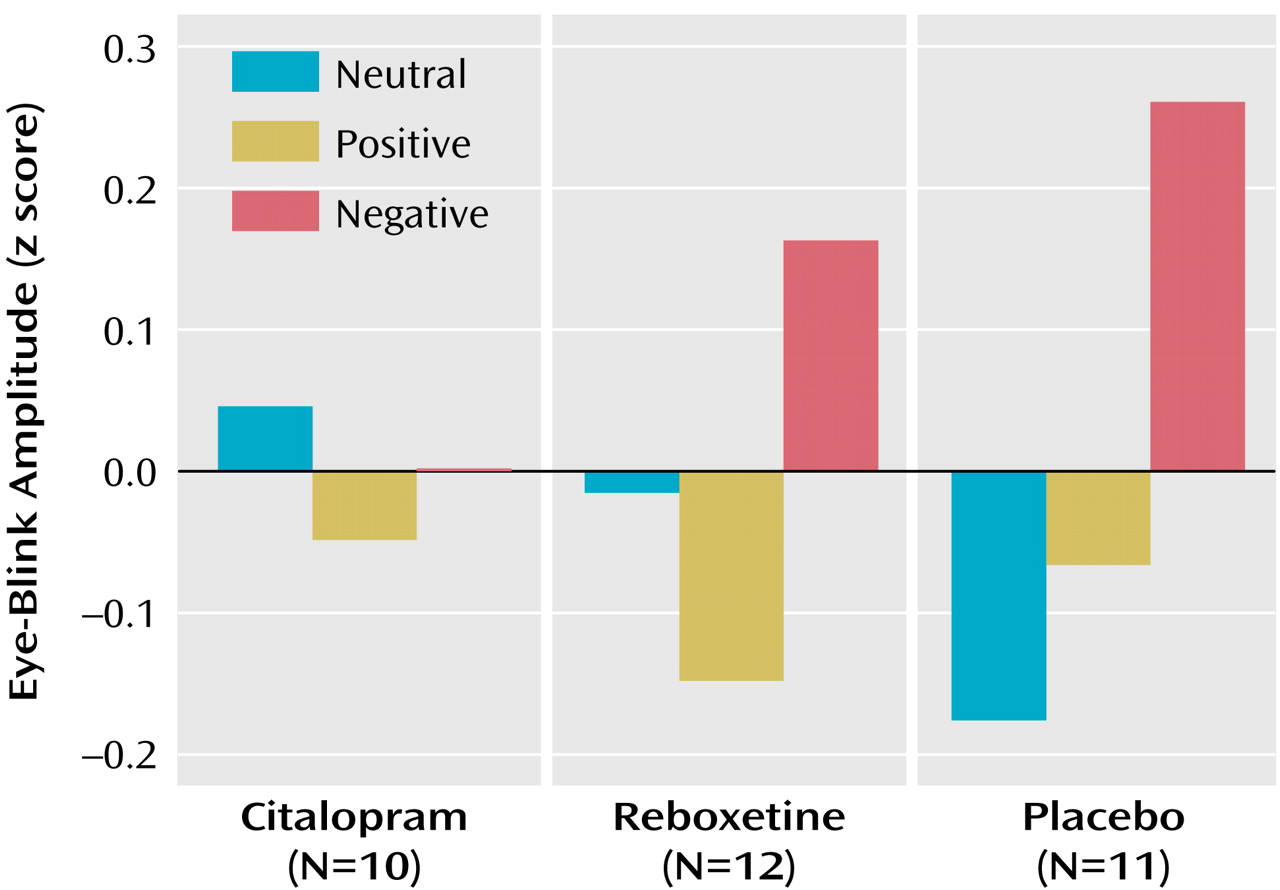Increased Positive Versus Negative Affective Perception and Memory in Healthy Volunteers Following Selective Serotonin and Norepinephrine Reuptake Inhibition
Abstract
Method
Volunteers and Design
Facial Expression Recognition
Stimuli
Procedure
Emotional Categorization Task
Emotional Memory
Emotion-Potentiated Startle Response
Stimuli
Procedure and recording
Statistics
Results
Subjective Mood, Anxiety, and Hostility
Facial Expression Recognition
Accuracy
Reaction time
Emotional Categorization
Emotional Memory
Emotion-Potentiated Startle Response
Discussion
Modulation of the Processing of Positive Material Following Antidepressant Administration
Fear Processing and the Actions of SSRIs
Does Citalopram Have a Broader Spectrum of Action on Fear-Related Processing Than Reboxetine?
Subjective State
Implications for Antidepressant Drug Action in Depression and Anxiety
Conclusions





Footnote
References
Information & Authors
Information
Published In
History
Authors
Metrics & Citations
Metrics
Citations
Export Citations
If you have the appropriate software installed, you can download article citation data to the citation manager of your choice. Simply select your manager software from the list below and click Download.
For more information or tips please see 'Downloading to a citation manager' in the Help menu.
View Options
View options
PDF/EPUB
View PDF/EPUBGet Access
Login options
Already a subscriber? Access your subscription through your login credentials or your institution for full access to this article.
Personal login Institutional Login Open Athens loginNot a subscriber?
PsychiatryOnline subscription options offer access to the DSM-5-TR® library, books, journals, CME, and patient resources. This all-in-one virtual library provides psychiatrists and mental health professionals with key resources for diagnosis, treatment, research, and professional development.
Need more help? PsychiatryOnline Customer Service may be reached by emailing [email protected] or by calling 800-368-5777 (in the U.S.) or 703-907-7322 (outside the U.S.).

